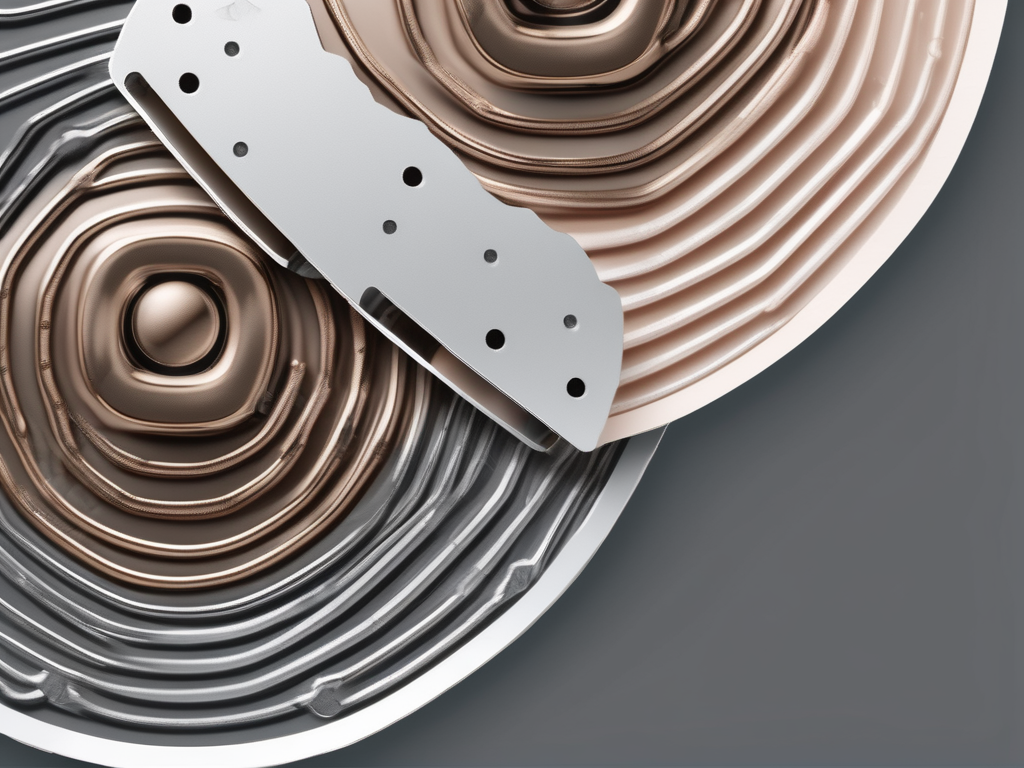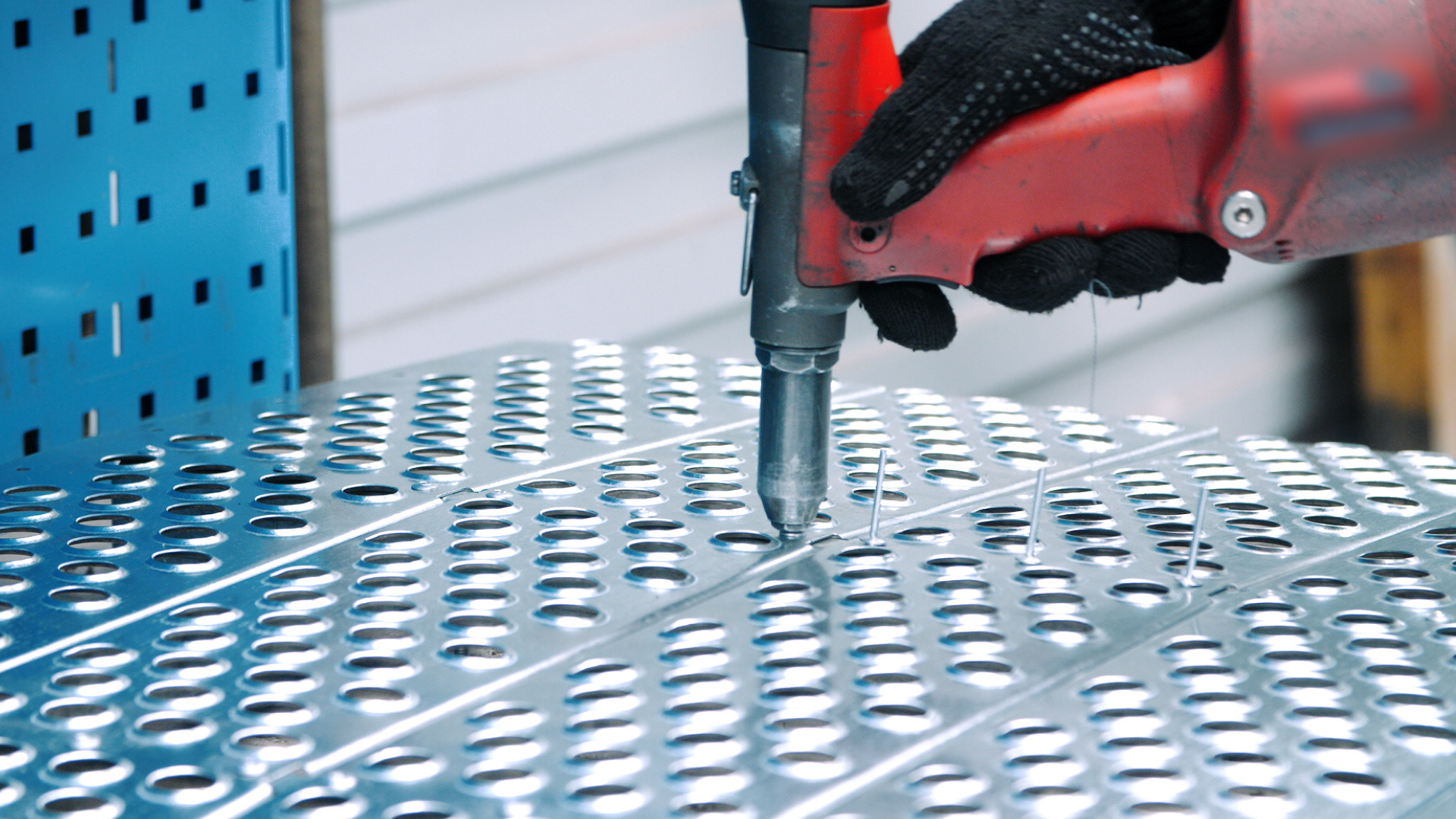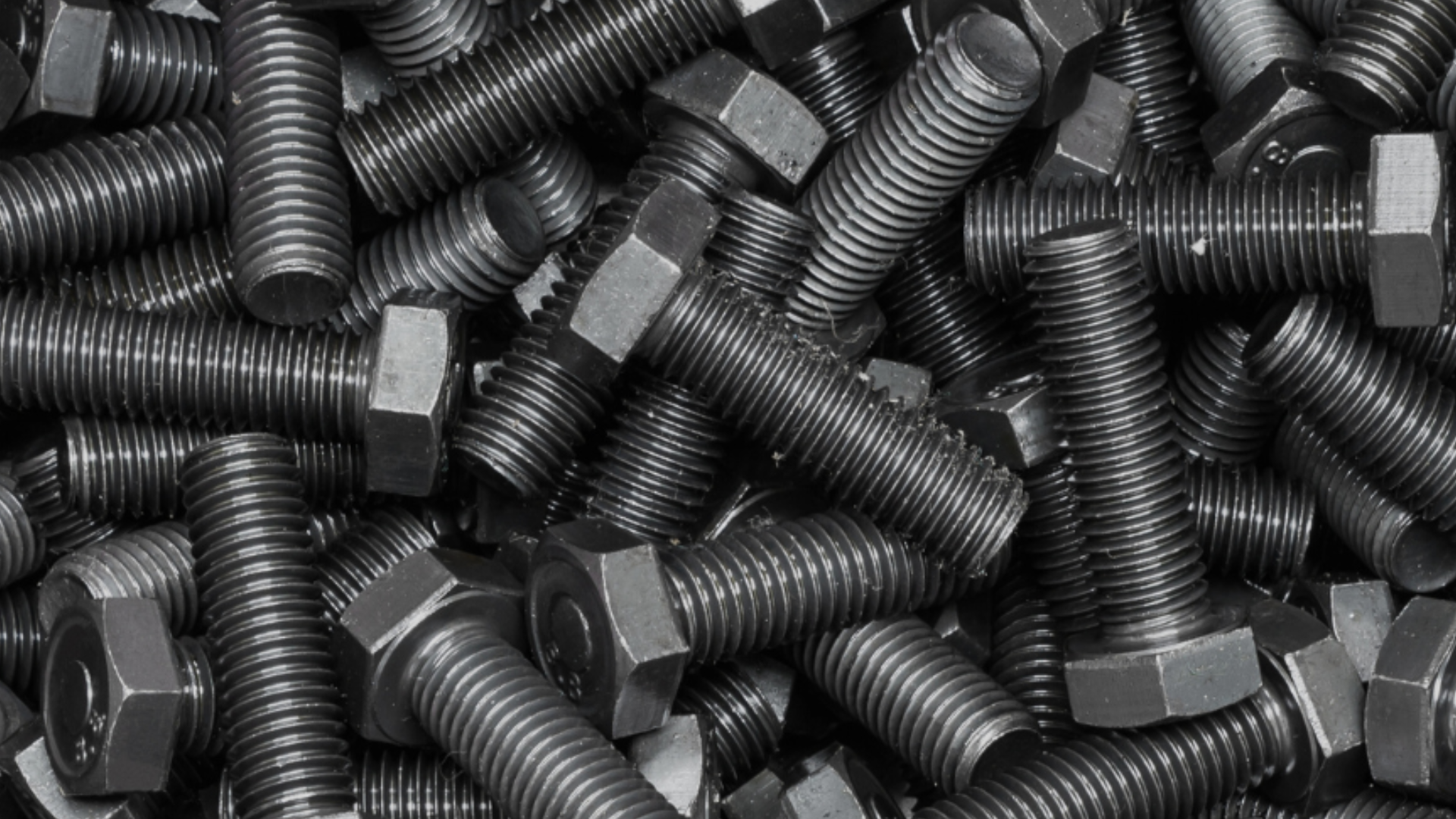Waterjet cutting is a versatile and efficient method of cutting a wide range of materials. This process utilizes a high-pressure stream of water, often mixed with an abrasive substance, to cut through materials. The waterjet cutting process is favored for its ability to produce high-quality cuts with minimal heat damage, making it suitable for materials that are sensitive to high temperatures.
However, like any other industrial machinery, waterjet cutting machines require regular maintenance to ensure optimal performance and longevity. This article provides a comprehensive glossary on waterjet maintenance, explaining the key terms, processes, and considerations involved in maintaining a waterjet cutting machine.
Table of Contents
Understanding Waterjet Cutting
Before delving into the specifics of waterjet maintenance, it’s crucial to understand the basics of waterjet cutting. This process involves the use of a high-pressure water stream, which can reach pressures up to 60,000 psi, to cut through materials. The water is ejected from a small orifice, and the high pressure allows it to cut through even the toughest materials.
Waterjet cutting can be performed with or without the addition of an abrasive substance. Pure waterjet cutting is typically used for softer materials, while abrasive waterjet cutting is used for harder materials. The abrasive substance, often garnet or aluminum oxide, is added to the water stream to enhance its cutting power.
The Components of a Waterjet Cutter
A waterjet cutter consists of several key components, each playing a crucial role in the cutting process. The high-pressure pump is responsible for generating the water pressure required for cutting. The cutting head contains the orifice and mixing chamber, where the water and abrasive are combined. The cutting table holds the material in place during cutting, and the control system regulates the entire operation.
The abrasive delivery system is another critical component in abrasive waterjet cutting. This system stores, meters, and delivers the abrasive to the cutting head. The quality and consistency of the abrasive can significantly impact the cutting performance, making the abrasive delivery system a vital part of the machine.
Types of Waterjet Cutting
There are two main types of waterjet cutting: pure waterjet cutting and abrasive waterjet cutting. Pure waterjet cutting uses only water to cut the material and is typically used for softer materials like rubber, foam, or food. This type of cutting is characterized by its clean cuts and high speed.
Abrasive waterjet cutting, on the other hand, uses a mixture of water and abrasive to cut through harder materials like metal, stone, or glass. The abrasive enhances the cutting power of the water stream, allowing it to cut through these tougher materials. Abrasive waterjet cutting is slower than pure waterjet cutting, but it can achieve more precise cuts and can handle a wider range of materials.
Waterjet Maintenance Basics
Regular maintenance is crucial for the performance and longevity of a waterjet cutting machine. This involves routine checks and replacements of key components, as well as regular cleaning and lubrication. Maintenance tasks can be divided into daily, weekly, monthly, and annual tasks, depending on their nature and importance.
Some common daily maintenance tasks include checking the water and abrasive levels, inspecting the cutting head for wear, and cleaning the cutting table. Weekly tasks might include checking the pump pressure, inspecting the abrasive delivery system, and lubricating moving parts. Monthly tasks could involve replacing worn parts, cleaning the water tank, and checking the electrical connections. Annual tasks typically involve more thorough inspections and replacements, as well as professional servicing.
Importance of Regular Maintenance
Regular maintenance is essential for several reasons. Firstly, it ensures that the machine is operating at its optimal performance level. A well-maintained machine can produce higher-quality cuts, operate more efficiently, and have a longer lifespan. Secondly, regular maintenance can help identify potential issues early, before they become serious problems. This can save time and money in the long run by preventing costly repairs or downtime.
Furthermore, regular maintenance can also ensure the safety of the machine and its operators. A poorly maintained machine can pose various safety risks, including leaks, malfunctions, or even explosions. By regularly inspecting and maintaining the machine, these risks can be minimized, ensuring a safe working environment.
Common Maintenance Tasks
There are several common maintenance tasks that are crucial for the upkeep of a waterjet cutting machine. These include checking and replacing the orifice and focusing nozzle, inspecting and cleaning the cutting head, checking the water pressure and quality, and maintaining the abrasive delivery system. Each of these tasks plays a crucial role in ensuring the machine’s performance and longevity.
The orifice and focusing nozzle are two of the most critical components in a waterjet cutter. They are responsible for directing the water stream and are subject to significant wear and tear. Regularly checking these components for wear and replacing them when necessary can ensure a consistent and high-quality cutting performance.
Understanding and Implementing Preventive Maintenance
Preventive maintenance involves regularly performing maintenance tasks to prevent potential issues before they occur. This approach can be more cost-effective than reactive maintenance, which involves fixing problems after they occur. Preventive maintenance can improve the machine’s performance, extend its lifespan, and reduce downtime.
Implementing a preventive maintenance program involves scheduling regular maintenance tasks based on the machine’s usage and the manufacturer’s recommendations. This might include daily inspections of key components, weekly cleaning tasks, monthly part replacements, and annual professional servicing. By adhering to a regular maintenance schedule, potential issues can be identified and addressed early, before they become serious problems.
Benefits of Preventive Maintenance
Preventive maintenance offers several benefits. Firstly, it can improve the machine’s performance by ensuring that all components are in good working condition. This can result in higher-quality cuts, increased efficiency, and less waste. Secondly, preventive maintenance can extend the machine’s lifespan by preventing premature wear and tear. This can save money in the long run by reducing the need for costly repairs or replacements.
Furthermore, preventive maintenance can reduce downtime by preventing unexpected breakdowns. By identifying and addressing potential issues early, the machine can continue operating without interruptions, improving productivity. Lastly, preventive maintenance can also improve safety by ensuring that the machine is in good working condition and minimizing the risk of accidents.
Implementing a Preventive Maintenance Program
Implementing a preventive maintenance program involves several steps. Firstly, it’s important to understand the machine’s operation and maintenance requirements. This can be achieved by reading the manufacturer’s manual, attending training sessions, and consulting with professionals. Secondly, a maintenance schedule should be created based on the machine’s usage and the manufacturer’s recommendations. This schedule should include daily, weekly, monthly, and annual tasks.
Once the maintenance schedule is established, it’s crucial to adhere to it consistently. Regular inspections and maintenance tasks should be performed as scheduled, and any issues identified should be addressed promptly. It’s also important to keep records of all maintenance activities, including inspections, part replacements, and repairs. These records can provide valuable information for future maintenance planning and troubleshooting.
Understanding and Dealing with Common Waterjet Cutting Issues
Despite regular maintenance, waterjet cutting machines can still encounter various issues. These can range from minor issues like inconsistent cut quality or slow cutting speed, to major problems like pump failure or control system malfunctions. Understanding these common issues and knowing how to deal with them can help ensure the machine’s performance and longevity.
Some common waterjet cutting issues include orifice wear, focusing nozzle wear, inconsistent water pressure, poor water quality, abrasive issues, and mechanical or electrical malfunctions. Each of these issues can impact the machine’s performance and cut quality, and require different solutions. For example, worn orifices or focusing nozzles can be replaced, water pressure issues can be addressed by checking and adjusting the pump, and abrasive issues can be resolved by inspecting and maintaining the abrasive delivery system.
Dealing with Orifice and Focusing Nozzle Wear
The orifice and focusing nozzle are two of the most critical components in a waterjet cutter, and they are subject to significant wear and tear. Worn orifices or focusing nozzles can result in inconsistent cut quality, reduced cutting speed, and increased abrasive usage. Regularly checking these components for wear and replacing them when necessary can ensure a consistent and high-quality cutting performance.
When replacing the orifice or focusing nozzle, it’s important to choose high-quality replacements that are suitable for the machine and the cutting requirements. The size and material of the orifice and focusing nozzle can significantly impact the cutting performance, so it’s crucial to choose the right ones. After replacing these components, it’s also important to recalibrate the machine to ensure optimal performance.
Addressing Water Pressure and Quality Issues
Water pressure and quality are crucial for the performance of a waterjet cutting machine. Inconsistent water pressure can result in uneven cuts, reduced cutting speed, and increased wear on the orifice and focusing nozzle. Poor water quality can cause premature wear and tear on the machine’s components, and can also impact the cut quality.
Water pressure issues can be addressed by checking the pump and adjusting its settings as necessary. If the pump is not able to maintain consistent pressure, it might need to be serviced or replaced. Water quality issues can be resolved by using a water treatment system to remove impurities from the water. Regularly testing the water quality and adjusting the treatment system as necessary can ensure that the water is suitable for cutting.
Professional Servicing and Support
While regular maintenance can be performed by the machine’s operators, some tasks require professional servicing. These might include thorough inspections, major repairs, or system upgrades. Professional servicing can ensure that the machine is in good working condition, and can also provide valuable advice and support for maintenance planning and troubleshooting.
Professional servicing should be scheduled based on the machine’s usage and the manufacturer’s recommendations. Typically, professional servicing should be performed annually, but more frequent servicing might be required for heavily used machines or machines that are used for cutting tough materials. Professional servicing can involve a thorough inspection of the machine, replacement of worn parts, calibration of the system, and software updates.
Benefits of Professional Servicing
Professional servicing offers several benefits. Firstly, it can ensure that the machine is in good working condition by identifying and addressing potential issues that might not be noticeable to the operators. This can improve the machine’s performance, extend its lifespan, and reduce downtime. Secondly, professional servicing can provide valuable advice and support for maintenance planning and troubleshooting. This can help the operators maintain the machine more effectively and deal with any issues that might arise.
Furthermore, professional servicing can also provide training for the operators. This can improve their understanding of the machine’s operation and maintenance requirements, and enhance their skills in performing maintenance tasks and dealing with common issues. Lastly, professional servicing can also involve system upgrades, which can improve the machine’s performance and functionality, and keep it up-to-date with the latest technology.
Choosing a Professional Service Provider
When choosing a professional service provider, it’s important to consider several factors. These include the provider’s experience and expertise in waterjet cutting, their familiarity with the specific machine model, their reputation and customer reviews, and their service offerings and costs. A good service provider should be able to provide comprehensive servicing, including inspections, repairs, replacements, calibration, software updates, and training.
It’s also important to consider the provider’s availability and response time. A provider with a fast response time can be crucial in case of emergencies, when immediate servicing might be required to prevent costly downtime. Lastly, it’s also beneficial to choose a provider that offers ongoing support, such as maintenance planning, troubleshooting assistance, and operator training.
Conclusion
Waterjet maintenance is a crucial aspect of waterjet cutting, ensuring the machine’s performance, longevity, and safety. By understanding the basics of waterjet cutting, implementing a regular maintenance program, dealing with common issues, and utilizing professional servicing, operators can ensure that their waterjet cutting machine operates at its optimal performance level and lasts for a long time.
While waterjet maintenance can be complex and time-consuming, it’s a worthwhile investment. A well-maintained machine can produce higher-quality cuts, operate more efficiently, have a longer lifespan, and provide a safer working environment. By investing time and effort in waterjet maintenance, operators can maximize the benefits of waterjet cutting and ensure the success of their cutting operations.



